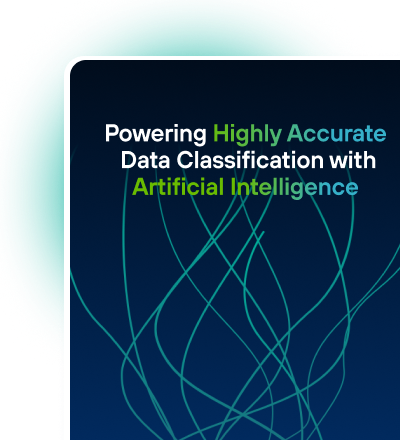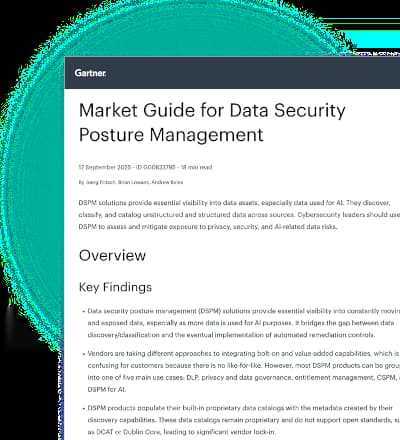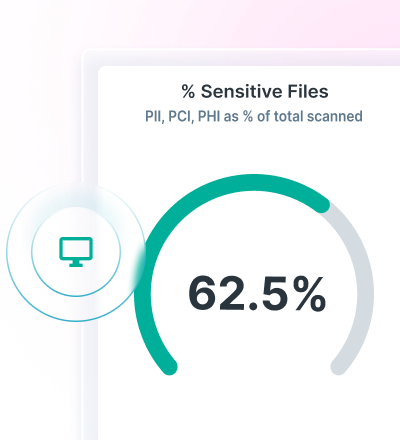8 Best Practices for Effective Data Access Governance
0 分の読み物

Lionel Menchaca
Data Access Governance (DAG) gives organizations the visibility and control needed to protect sensitive data across complex hybrid environments.
As cloud adoption and AI-driven automation accelerate data sharing, traditional access models struggle to keep pace. Security leaders need a well-structured program that continuously identifies where data resides, who can access it and how those permissions are used in real time.
An effective Data Access Governance program does more than manage access. It provides explainability and accountability by showing that every access decision is justified, compliant and auditable. The following eight data access governance best practices can help your organization build a strategy that achieves both security and operational trust.
1. Classify data by sensitivity and business context
Start with visibility. Automate discovery and classification to locate sensitive data across cloud applications, endpoints and collaboration platforms. Tag each dataset based on business value and regulatory requirements to focus protection where it matters most.
2. Map access relationships across identities and data stores
Create a unified view of who has access to what. Correlate user identities, entitlements and data flows across Active Directory, SaaS platforms like SharePoint and data lakes to uncover excessive or orphaned access that increases exposure and data risk.
3. Enforce least privilege at scale
Continuously review and right-size permissions to align with job responsibilities. Automate access reviews and remediation workflows to reduce manual effort and prevent privilege creep over time.
4. Monitor and analyze data behavior in real time
Visibility should go beyond permissions. Combine activity monitoring with AI-driven analytics to detect unusual data movements and risky sharing before they become incidents.
5. Integrate DAG with DSPM, DDR, DLP and CASB
True governance requires both visibility and control. Integrating Data Access Governance solutions like DSPM, DDR, DLP and CASB enables unified classification, policy enforcement and risk response across structured and unstructured data. Together, these capabilities provide continuous monitoring, context-driven enforcement and real-time risk remediation.
6. Align DAG policies with compliance frameworks
Connect DAG controls to compliance frameworks such as GDPR, HIPAA and SOX. Explainable access decisions simplify audits, demonstrate due diligence and strengthen trust with regulators and internal stakeholders.
7. Prioritize high-impact data domains
Apply DAG where it delivers the greatest risk reduction first, including regulated records, intellectual property and executive communications. Expand coverage as automation and maturity improve.
8. Operationalize governance through continuous assessment
Treat DAG as an evolving program. Conduct regular Data Risk Assessments (DRAs) to validate controls, identify new risks and update policies as data locations, user roles and AI tools evolve.
In summary: Strong data access governance isn’t just a compliance checkbox – it’s how organizations maintain trust, reduce risk and ensure the right people have access to the right data at the right time. By following these data access governance best practices, security and compliance leaders can strengthen visibility, enforce least-privilege policies and build a sustainable foundation for protecting sensitive information across hybrid and cloud environments.
Next step: As you work to implement these best practices, you can strengthen your DAG program with a free Forcepoint Data Risk Assessment. It reveals where your highest data access risks exist and shows how Forcepoint’s integrated data security platform can help close them.

Lionel Menchaca
の記事をもっと読む Lionel MenchacaAs the Content Marketing and Technical Writing Specialist, Lionel leads Forcepoint's blogging efforts. He's responsible for the company's global editorial strategy and is part of a core team responsible for content strategy and execution on behalf of the company.
Before Forcepoint, Lionel founded and ran Dell's blogging and social media efforts for seven years. He has a degree from the University of Texas at Austin in Archaeological Studies.
 How to Strengthen Data Access Governance with Forcepoint DSPMビデオを見る
How to Strengthen Data Access Governance with Forcepoint DSPMビデオを見る
X-Labs
インサイトや分析、ニュースを直接お届けします










